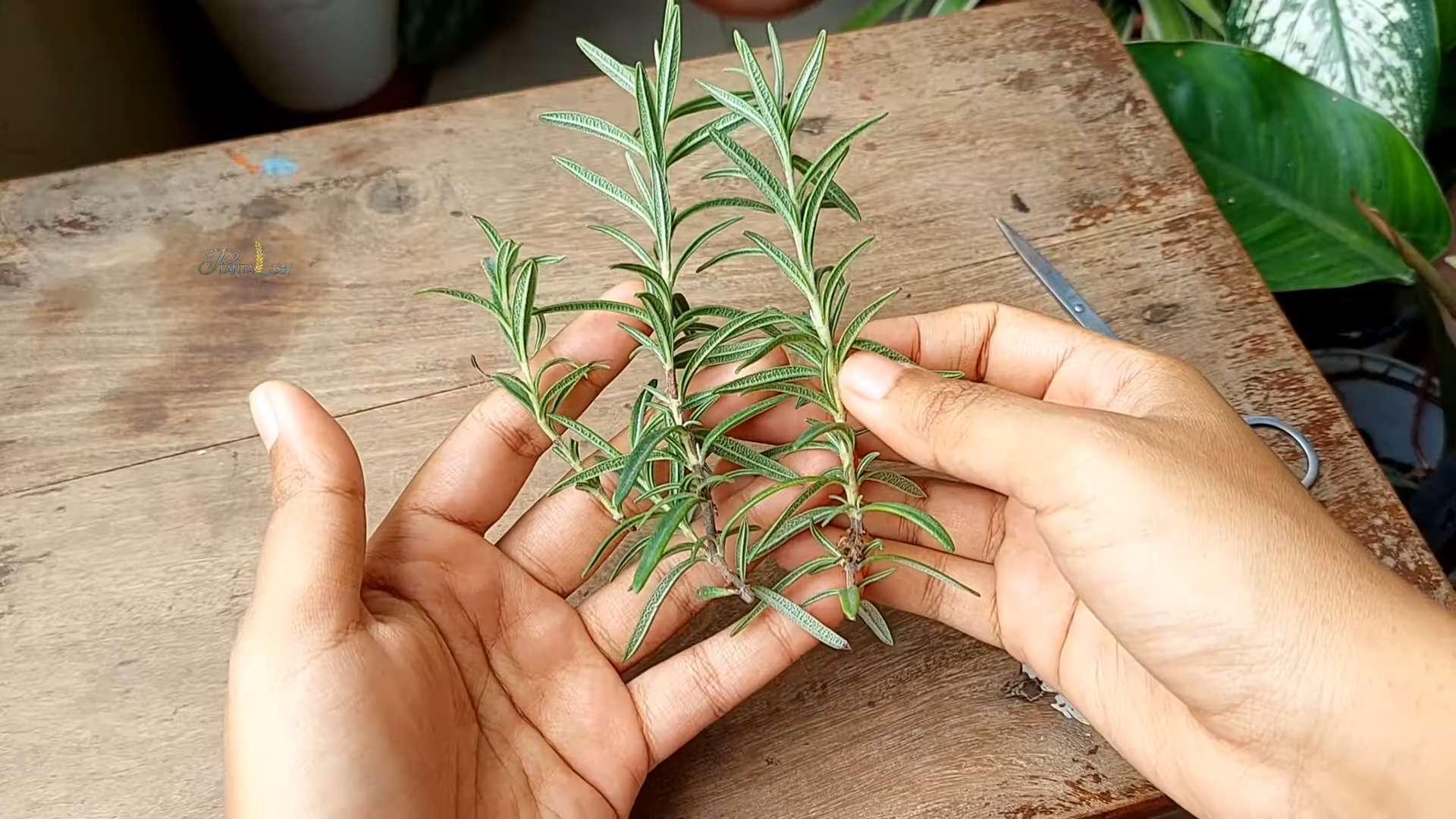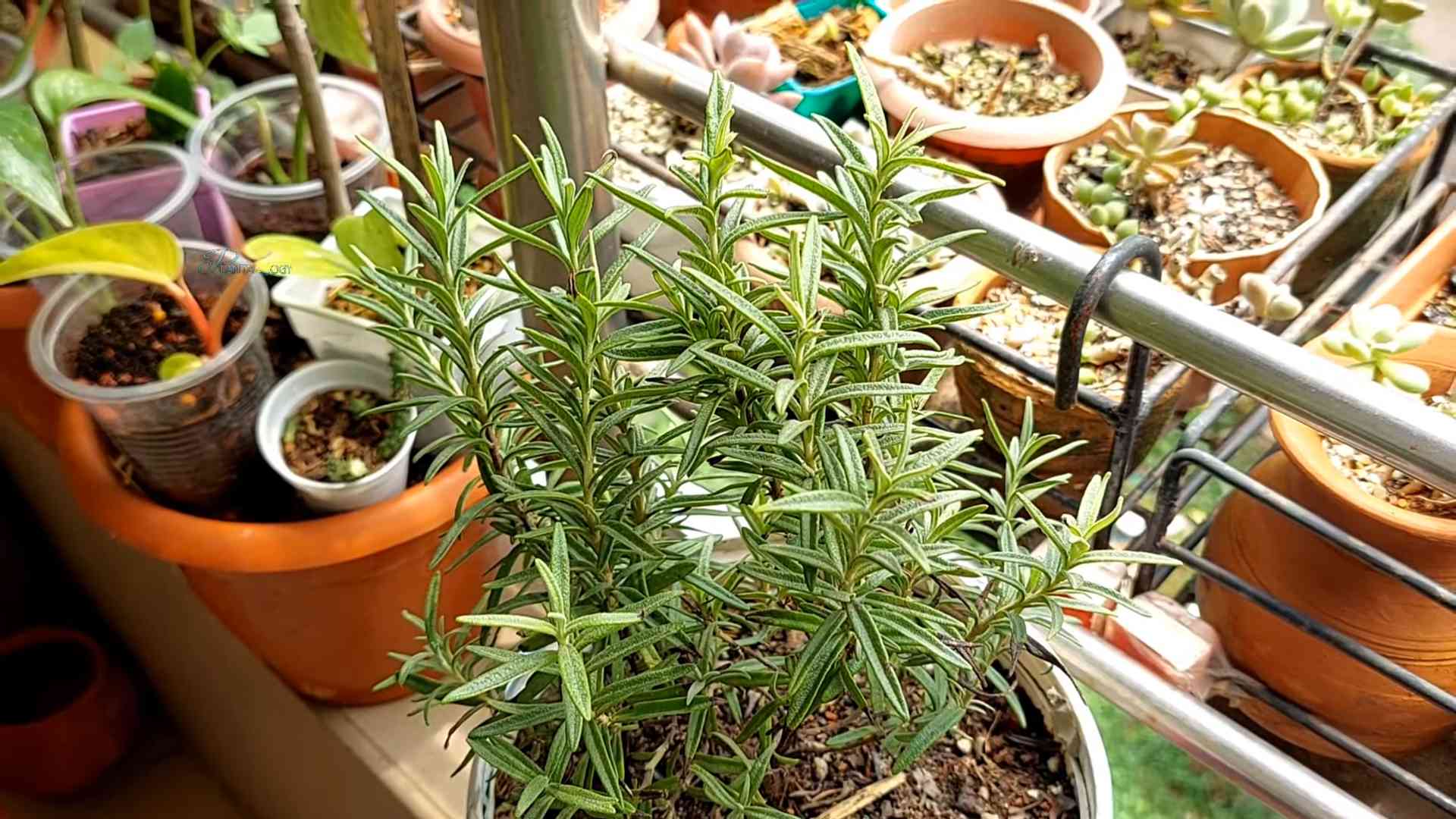Grow Rosemary at Home and unlock a world of fragrant possibilities right outside your door! Have you ever dreamed of snipping fresh herbs for your culinary creations, knowing exactly where they came from and how they were grown? Well, dream no more! This DIY guide is your passport to cultivating your very own rosemary haven, no matter the size of your space or your gardening experience.
Rosemary, with its needle-like leaves and distinctive aroma, boasts a rich history. Revered in ancient Greece and Rome for its medicinal and symbolic properties – representing remembrance and fidelity – rosemary has been a cherished herb for centuries. It’s more than just a flavorful addition to your dishes; it’s a connection to the past and a symbol of enduring qualities.
In today’s fast-paced world, knowing how to grow rosemary at home offers a welcome escape and a tangible connection to nature. Imagine the satisfaction of harvesting your own rosemary for roasted chicken, infused oils, or even homemade skincare products! Plus, growing your own herbs is a fantastic way to reduce your reliance on store-bought options, saving you money and ensuring you have access to fresh, organic ingredients. I’m excited to share these simple yet effective DIY tricks that will have you enjoying the delightful benefits of homegrown rosemary in no time!

Grow Your Own Rosemary: A Beginner’s Guide
Hey there, fellow plant enthusiasts! I’m so excited to share my experience with growing rosemary at home. It’s easier than you might think, and having fresh rosemary on hand for cooking is a total game-changer. Plus, the aroma is just divine! Let’s dive in.
Choosing Your Rosemary
Before we get our hands dirty, let’s talk rosemary varieties. There are a few different types, each with its own unique characteristics.
* Upright Rosemary: This is the classic rosemary we all know and love. It grows tall and bushy, perfect for hedges or adding vertical interest to your garden.
* Creeping Rosemary: As the name suggests, this type spreads horizontally, making it ideal for ground cover or cascading over walls.
* Prostrate Rosemary: Similar to creeping rosemary, but even more low-growing and spreading.
I personally prefer upright rosemary because I love the traditional look, but feel free to experiment and see which one you like best! You can usually find rosemary plants at your local garden center or nursery. Look for healthy plants with vibrant green foliage and no signs of pests or diseases.
Getting Started: Propagation Methods
There are a couple of ways to get your rosemary journey started: from seeds or from cuttings. I’ve had more success with cuttings, so that’s what I’ll focus on here.
Taking Rosemary Cuttings
This is my preferred method because it’s faster and easier than starting from seeds.
What You’ll Need:
* A healthy rosemary plant (your “mother” plant)
* Sharp, clean pruning shears or scissors
* Rooting hormone (optional, but recommended)
* Small pots or containers
* Well-draining potting mix (I like a mix of perlite, peat moss, and vermiculite)
* Watering can or spray bottle
* Clear plastic bag or humidity dome (optional)
Step-by-Step Instructions:
1. Select Your Cuttings: Choose healthy, non-flowering stems from your mother plant. Look for stems that are about 4-6 inches long.
2. Prepare the Cuttings: Using your clean pruning shears, make a clean cut just below a leaf node (the point where a leaf grows from the stem). Remove the leaves from the bottom inch or two of the cutting. This is where the roots will emerge.
3. Apply Rooting Hormone (Optional): Dip the cut end of the cutting into rooting hormone powder or liquid. This will help stimulate root growth. I find it significantly increases my success rate.
4. Plant the Cuttings: Fill your small pots with well-draining potting mix. Make a small hole in the center of the soil and gently insert the cutting. Firm the soil around the cutting to provide support.
5. Water and Cover: Water the cuttings gently until the soil is moist but not soggy. Cover the pots with a clear plastic bag or humidity dome to create a humid environment. This will help prevent the cuttings from drying out.
6. Provide Light and Warmth: Place the cuttings in a warm, bright location, but avoid direct sunlight, which can scorch the leaves. A windowsill with indirect light is perfect.
7. Monitor and Water: Check the cuttings regularly to make sure the soil stays moist. Water as needed, but avoid overwatering, which can lead to rot.
8. Wait for Roots: It usually takes about 4-8 weeks for the cuttings to develop roots. You can gently tug on the cuttings to check for resistance, which indicates that roots have formed.
9. Transplant: Once the cuttings have developed a good root system, you can transplant them into larger pots or directly into your garden.
Planting Rosemary
Whether you started from cuttings or purchased a rosemary plant, planting is a crucial step.
Choosing the Right Location:
Rosemary thrives in sunny locations with well-draining soil. It prefers at least 6-8 hours of sunlight per day. If you’re planting in a container, make sure it has drainage holes to prevent waterlogging.
Soil Preparation:
Rosemary prefers slightly alkaline soil. If your soil is acidic, you can amend it with lime. You can also add compost or other organic matter to improve drainage and fertility.
Planting Instructions:
1. Dig a Hole: Dig a hole that is slightly larger than the root ball of your rosemary plant.
2. Loosen the Roots: Gently loosen the roots of the plant before placing it in the hole.
3. Plant the Rosemary: Place the plant in the hole and backfill with soil. Make sure the top of the root ball is level with the surrounding soil.
4. Water Thoroughly: Water the plant thoroughly after planting.
5. Mulch (Optional): Add a layer of mulch around the base of the plant to help retain moisture and suppress weeds.
Caring for Your Rosemary
Once your rosemary is planted, it’s important to provide proper care to ensure it thrives.
Watering:
Rosemary is drought-tolerant, so it doesn’t need to be watered frequently. Water deeply when the soil is dry to the touch, but avoid overwatering, which can lead to root rot.
Fertilizing:
Rosemary doesn’t require heavy fertilization. You can fertilize it once or twice a year with a balanced fertilizer. I usually use a slow-release fertilizer in the spring.
Pruning:
Pruning is essential for maintaining the shape and health of your rosemary plant. Prune it regularly to remove dead or damaged branches and to encourage bushier growth. I usually prune mine in the spring after it finishes flowering.
Overwintering:
Rosemary is hardy in zones 7-10. If you live in a colder climate, you’ll need to protect your rosemary plant from frost. You can either bring it indoors or cover it with a frost blanket.
Dealing with Pests and Diseases
Rosemary is generally pest-resistant, but it can occasionally be affected by aphids, spider mites, or powdery mildew.
* Aphids: These tiny insects suck sap from the leaves, causing them to become distorted and yellow. You can control aphids by spraying them with insecticidal soap or neem oil.
* Spider Mites: These tiny mites create webs on the leaves and can cause them to become discolored. You can control spider mites by spraying them with insecticidal soap or neem oil.
* Powdery Mildew: This fungal disease causes a white, powdery coating on the leaves. You can prevent powdery mildew by providing good air circulation and avoiding overwatering. If your plant is affected, you can treat it with a fungicide.
Harvesting Rosemary
The best part about growing your own rosemary is being able to harvest it whenever you need it!
When to Harvest:
You can harvest rosemary at any time of year, but the flavor is most intense in the spring and summer.
How to Harvest:
Simply snip off sprigs of rosemary with pruning shears or scissors. You can use the fresh rosemary immediately or dry it for later use.
Drying Rosemary:
To dry rosemary, tie the sprigs together and hang them upside down in a cool, dry place. Once the leaves are dry and brittle, you can remove them from the stems and store them in an airtight container.
Using Your Homegrown Rosemary
Now for the fun part: using your homegrown rosemary in the kitchen! Rosemary is a versatile herb that can be used in a variety of dishes.
* Roasted Meats: Rosemary is a classic pairing with roasted meats, such as lamb, chicken, and pork.
* Vegetables: Rosemary adds a delicious flavor to roasted vegetables, such as potatoes, carrots, and Brussels sprouts.
* Soups and Stews: Rosemary can be added to soups and stews for a warm, herbaceous flavor.
* Bread and Pizza: Rosemary is a popular ingredient in bread and pizza dough.
* Infused Oils and Vinegars: You can infuse olive oil or vinegar with rosemary for a flavorful addition to salads and other dishes.
I love adding fresh rosemary to my roasted chicken, and it’s also fantastic in homemade focaccia bread. The possibilities are endless!
Troubleshooting
Even with the best care, you might encounter some challenges along the way. Here are a few common problems and how to address them:
* Yellowing Leaves: This could be a sign of overwatering, underwatering, or nutrient deficiency. Check the soil moisture and adjust your watering accordingly. You can also fertilize your plant with a balanced fertilizer.
* Brown Tips: This is often caused by dry air or salt buildup in the soil. Increase humidity by misting the plant regularly or placing it on a pebble tray filled with water. Flush the soil with water to remove excess salt.
* Leggy Growth: This indicates that your plant isn’t getting enough sunlight. Move it to a sunnier location or supplement with artificial light.
*

Conclusion
So, there you have it! Growing rosemary at home isn’t just a charming addition to your garden or windowsill; it’s a gateway to fresher, more flavorful meals and a more sustainable lifestyle. We’ve walked through the simple steps, from choosing the right rosemary variety to nurturing it with the proper sunlight and watering. And while it might seem daunting at first, the rewards of having your own readily available supply of this fragrant herb are well worth the effort.
Why is this DIY trick a must-try? Because it empowers you to control the quality and freshness of your rosemary. No more wilted sprigs from the grocery store! You’ll have vibrant, aromatic rosemary at your fingertips whenever inspiration strikes. Plus, growing your own herbs is incredibly satisfying. There’s a unique joy in nurturing a plant from a small cutting or seedling to a thriving bush.
But the benefits don’t stop there. Think about the possibilities! You can experiment with different varieties of rosemary, each with its own unique flavor profile. ‘Blue Boy’ is known for its compact size and intense flavor, perfect for smaller spaces. ‘Tuscan Blue’ boasts upright growth and beautiful blue flowers, adding visual appeal to your garden. And ‘Prostratus’ is a creeping variety, ideal for cascading over walls or containers.
Beyond the culinary realm, rosemary offers a range of other uses. Infuse it in olive oil for a flavorful dipping sauce or salad dressing. Dry the leaves and add them to potpourri for a natural air freshener. You can even use rosemary sprigs to create beautiful and fragrant wreaths or centerpieces.
Ready to take your rosemary game to the next level? Consider these variations:
* Rosemary Topiary: Train your rosemary plant into a beautiful topiary shape for an elegant and fragrant addition to your home.
* Rosemary Water: Infuse water with rosemary sprigs for a refreshing and detoxifying drink.
* Rosemary Salt: Combine dried rosemary leaves with sea salt for a flavorful seasoning blend.
* Rosemary Companion Planting: Plant rosemary near vegetables like cabbage, beans, and carrots to deter pests.
Ultimately, growing rosemary at home is an investment in your culinary creativity, your well-being, and your connection to nature. It’s a simple yet profound way to enhance your everyday life.
We wholeheartedly encourage you to give this DIY trick a try. Start small, be patient, and don’t be afraid to experiment. Once you experience the joy of harvesting your own fresh rosemary, you’ll never look back.
And most importantly, we want to hear about your experiences! Share your tips, successes, and even your challenges in the comments below. Let’s create a community of rosemary enthusiasts and learn from each other. What variety did you choose? What dishes have you created with your homegrown rosemary? What challenges did you face, and how did you overcome them? Your insights will inspire others to embark on their own rosemary-growing journey. So, get your hands dirty, embrace the process, and enjoy the fragrant rewards of growing rosemary at home!
Frequently Asked Questions (FAQ)
What is the best way to start growing rosemary?
The best way to start growing rosemary depends on your preference and resources. You can start from seeds, cuttings, or purchase a small established plant from a nursery. Starting from seeds can be a bit more challenging and time-consuming, as rosemary seeds have a relatively low germination rate. Cuttings are a popular and relatively easy method. Simply take a 4-6 inch cutting from a healthy rosemary plant, remove the lower leaves, and place it in water or directly into well-draining soil. Keep the soil moist and wait for roots to develop. Purchasing a small plant is the quickest and easiest option, allowing you to enjoy fresh rosemary sooner.
How much sunlight does rosemary need?
Rosemary thrives in full sun, requiring at least 6-8 hours of direct sunlight per day. If you’re growing rosemary indoors, place it near a sunny window, preferably one that faces south or west. If you don’t have enough natural light, you can supplement with a grow light. Insufficient sunlight can lead to leggy growth and reduced flavor.
What type of soil is best for rosemary?
Rosemary prefers well-draining soil that is slightly acidic to neutral (pH 6.0-7.0). Avoid heavy clay soils that retain too much moisture, as this can lead to root rot. A good potting mix for rosemary should contain a combination of peat moss, perlite, and vermiculite. You can also amend your garden soil with compost or other organic matter to improve drainage and fertility.
How often should I water my rosemary plant?
Water rosemary deeply but infrequently, allowing the soil to dry out slightly between waterings. Overwatering is a common mistake that can lead to root rot. Check the soil moisture by sticking your finger about an inch into the soil. If it feels dry, it’s time to water. During the growing season (spring and summer), you may need to water more frequently than during the dormant season (fall and winter).
How do I prune rosemary?
Pruning rosemary is essential for maintaining its shape, promoting bushier growth, and preventing it from becoming leggy. Prune rosemary in the spring after flowering. Use sharp, clean pruning shears to trim back the stems by about one-third. Avoid cutting into the woody parts of the plant, as this can hinder new growth. You can also pinch off the tips of the stems regularly to encourage branching.
Can I grow rosemary indoors?
Yes, you can successfully grow rosemary indoors, provided you meet its basic needs. Ensure it receives plenty of sunlight, use well-draining soil, and water sparingly. Choose a pot with drainage holes to prevent waterlogging. Rotate the plant regularly to ensure even growth on all sides. Consider using a humidifier or placing the pot on a tray filled with pebbles and water to increase humidity, especially during dry winter months.
How do I harvest rosemary?
Harvest rosemary sprigs as needed throughout the growing season. Simply snip off the stems with pruning shears or scissors. The flavor of rosemary is most intense just before flowering. To dry rosemary, hang the sprigs upside down in a cool, dry, and well-ventilated place until they are completely dry. You can also dry rosemary in a dehydrator or oven on low heat.
What are some common problems with rosemary and how do I fix them?
Some common problems with rosemary include root rot, powdery mildew, and pests like spider mites and aphids. Root rot is caused by overwatering, so ensure your rosemary is planted in well-draining soil and water sparingly. Powdery mildew is a fungal disease that can occur in humid conditions. Improve air circulation around the plant and treat with a fungicide if necessary. Spider mites and aphids can be controlled with insecticidal soap or neem oil. Regularly inspect your rosemary plant for signs of pests or diseases and take action promptly to prevent them from spreading.
Is rosemary safe for pets?
Rosemary is generally considered safe for pets in small amounts. However, consuming large quantities of rosemary can cause gastrointestinal upset in some animals. If you have pets that tend to nibble on plants, it’s best to keep your rosemary plant out of their reach.
Can I propagate rosemary from cuttings?
Yes, propagating rosemary from cuttings is a relatively easy and effective way to create new plants. Take a 4-6 inch cutting from a healthy rosemary plant, remove the lower leaves, and place it in water or directly into well-draining soil. If using water, change the water every few days. If planting directly in soil, keep the soil moist but not soggy. Roots should develop within a few weeks. Once the cuttings have established roots, you can transplant them into individual pots or into your garden.




Leave a Comment